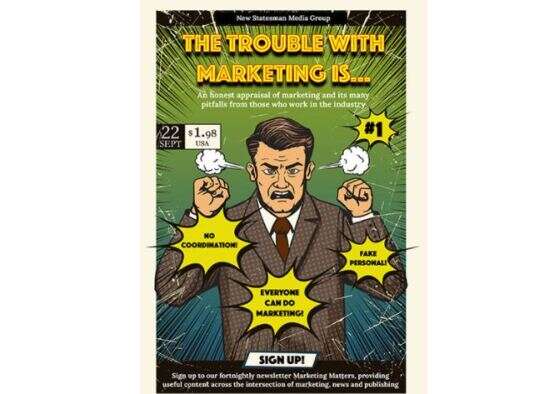
Evaluation director at Kantar Anna Salter answers are questions about the future of media in the latest of Press Gazette’s Marketing Maestro interviews. This series is produced in association with Lead Monitor, New Statesman Media Group’s AI-driven marketing solution.
What media channels do you see as most important and best value when it comes to marketing spend and activity?
It depends on who marketers are targeting. If you’re aiming to reach a highly specific group then there is likely to be a specialist online or print title that fits that demographic perfectly. For broader-based PR campaigns where you want to engage a wide audience, I think it’s important not to overlook traditional media formats like TV and newspapers.
During the pandemic, we saw a real resurgence in TV news viewing as people looked for trusted sources of information about what was happening. Our survey of over 6,000 consumers showed it was the most popular news source for nearly two-thirds of people aged 16 to 64. News providers like the BBC, ITV and Channel Four still have major reach. They also convey a valuable ‘halo’ effect for brands who want to benefit from the association with respected outlets.
Download New Statesman Media Group’s latest white paper: The trouble with marketing is…
An honest appraisal of marketing and its many pitfalls from those who work in the industry.
How important is emerging media eg social media and podcasts in modern marketing?
Social and podcasts absolutely have a role to play but they aren’t always as influential as marketers think. We found a significant perception gap in how PR and marketing teams view social feeds and podcasts, versus what the public thinks. Around half of practitioners believe that audiences are using social influencers and podcasts more to get their news, yet just 7% and 5% of people respectively say they are doing so.
For context, Kantar’s TGI Consumer Data indicates that just 9% of UK consumers listened to podcasts in an average week in 2020 – and that was during a period when people were hungry for information about the pandemic and often had more time on their hands at home. Again it’s about who you want to reach.
Converted podcast listeners love the format and we see them delving into content but they are still a relatively small group. The issue is that professional PR and marketing teams are sometimes ahead of the curve on these things. It’s important that they show clients and senior teams the reality of current consumer trends and don’t overstate just how fast things are changing. That’s why it is essential to have the right data to hand, to correct those assumptions.
What for you is the key to any successful marketing campaign – what actually makes a ‘good lead’?
Integration across a campaign in terms of planning and evaluation is key. PR in particular is still too often seen as something that sits apart from advertising and marketing, but it plays a critical role in building consumer awareness and how people think about a brand, especially over the long term. PR might not always have immediate impact in terms of a decision to purchase but it informs that choice and how people engage with marketing and advertising. If you don’t understand how that journey fits together, then your campaign will struggle to achieve its full potential.
What are the biggest pain points in a marketing campaign?
Effective evaluation remains a challenge. Marketers need to deliver relevant and robust data that is respected and understood by the organisation they’re reporting to. That information won’t necessarily be the most obvious or easy to obtain. It can be especially tricky to demonstrate the value of media relations, for example.
Most measurement tools were originally developed for advertising and they don’t always neatly apply to the practice of PR with its different delivery techniques and objectives. There is also often the assumption that digital marketing is somehow better because it churns out a lot of data, but that doesn’t make those numbers more meaningful. Ultimately, you have to get to the crux of what a business wants to achieve commercially and shape outcome-based metrics that show how marketing and PR is feeding into those goals.
Email pged@pressgazette.co.uk to point out mistakes, provide story tips or send in a letter for publication on our "Letters Page" blog

